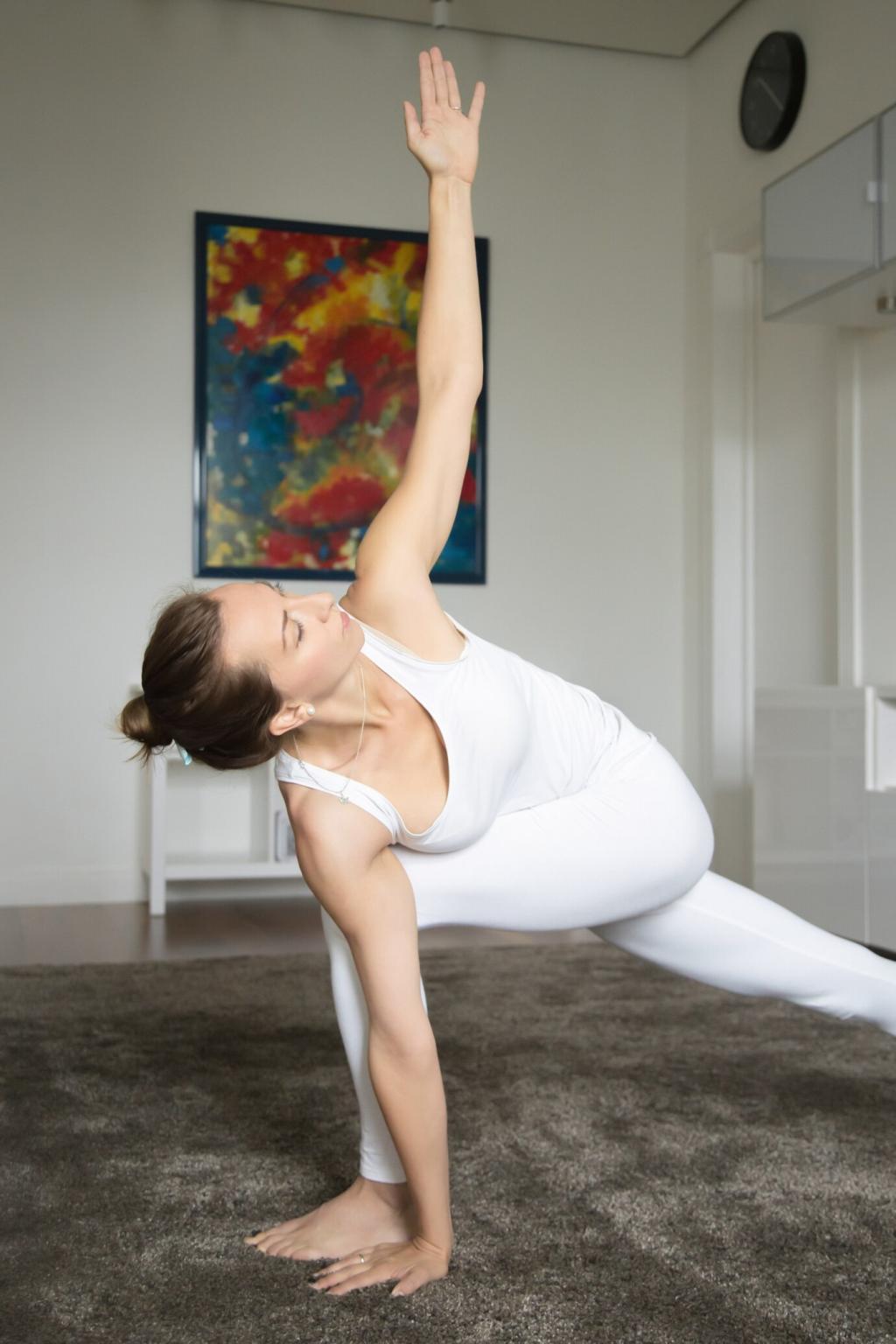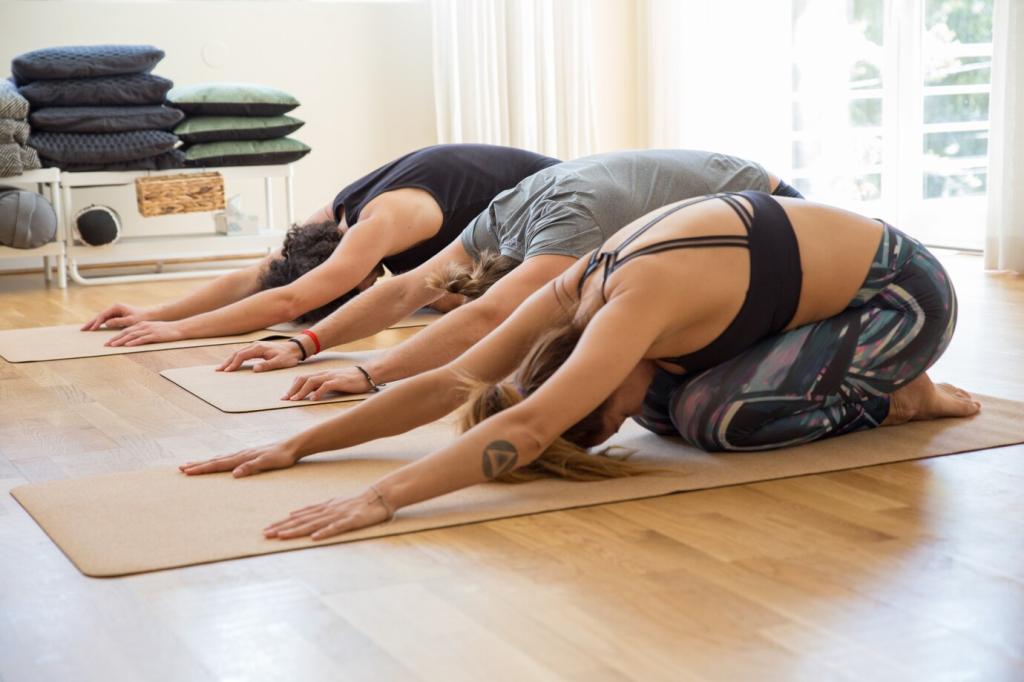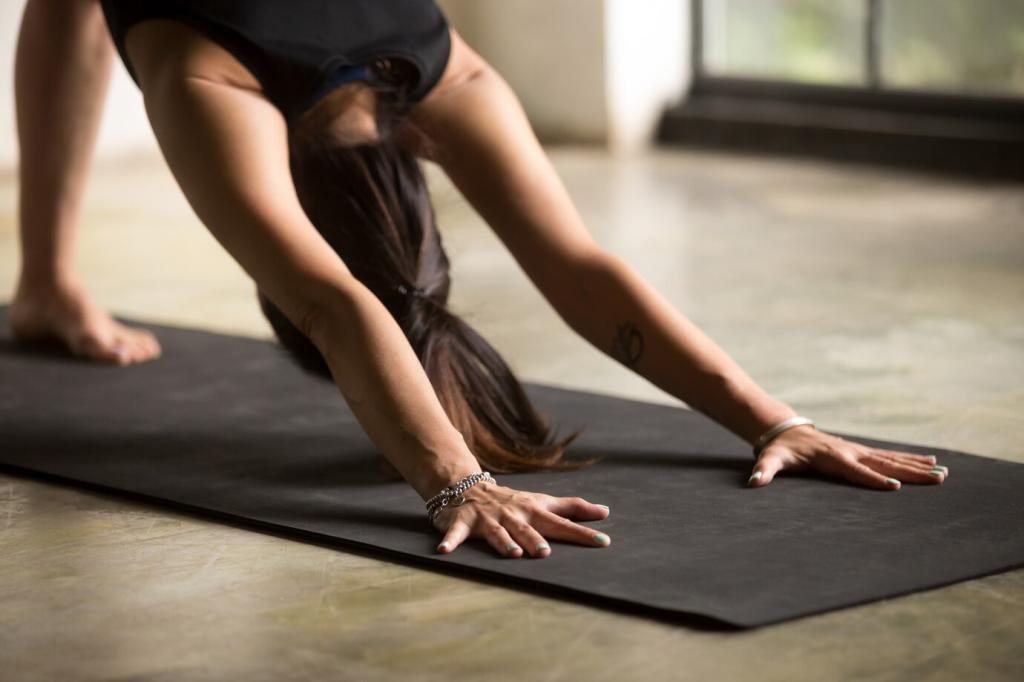
Beginner-Friendly Yoga Sequences for Home Practice
Begin your yoga journey from the comfort of your own home with easy-to-follow sequences designed specifically for beginners. This page guides you through foundational yoga flows, highlights essential tips for safe practice, and shows you how to adapt common yoga postures for your unique needs. Whether you’re brand new to yoga or looking to establish a simple home routine, you’ll find expert guidance and gentle encouragement every step of the way.
The Value of Starting Slow
Starting slow is crucial when you are new to yoga. It allows your body time to adjust to unfamiliar movements and helps prevent potential injuries. By focusing on slow, mindful movements, you learn proper alignment and form, which sets the groundwork for more advanced yoga sequences in the future. This approach also calms the nervous system, reduces stress, and enhances mindfulness, making each practice session both safe and deeply satisfying.
Setting Realistic Expectations
Many newcomers expect rapid results or feel intimidated by advanced poses seen online. Setting realistic and compassionate goals is essential for nurturing a sustainable practice. As a beginner, the focus should not be on mastering complex poses, but rather on building strength, flexibility, and body awareness gradually. Remember, each body is unique—progress may look different for everyone, and every step forward counts.
Essential Yoga Poses for Beginners
Mountain Pose (Tadasana)
Mountain Pose may appear simple, but it is fundamental to proper alignment and posture. Standing with feet hip-width apart, weight evenly distributed, and shoulders relaxed, you become deeply aware of how your body feels. This pose strengthens the legs, improves balance, and lays the groundwork for all standing postures. It also encourages conscious breathing and present-moment awareness, making it an excellent starting point for every home session.
Downward Facing Dog (Adho Mukha Svanasana)
Downward Facing Dog is a well-known yoga pose that stretches and strengthens the entire body. From hands and feet pressing into the mat, the hips lift, forming an upside-down “V” shape. For beginners, bending the knees or keeping the heels lifted is perfectly fine. This pose lengthens the spine, opens the shoulders, and energizes the body, providing both active stretch and gentle decompression for tired muscles.
Child’s Pose (Balasana)
Child’s Pose offers a gentle release and a restful break whenever you need it during practice. Kneeling on the mat, you fold forward, resting your torso between the thighs and stretching the arms forward or alongside the body. This deeply relaxing posture encourages mindful breathing and promotes a sense of safety and comfort. It is invaluable for restoring energy and soothing body and mind, especially after more challenging poses.
Building a Simple Home Practice Routine
Establishing a regular time for your yoga practice helps it become a lasting habit. Whether you prefer morning movement to start your day or evening sessions to unwind, choose a time you can realistically commit to. Embracing consistency, even if the sessions are short, is far more beneficial than sporadic longer practices. This routine becomes an anchor for self-care in your daily life.
Warm-Up Sequences to Prepare Your Body
Tension tends to accumulate in the neck and shoulders, especially for those who spend long hours at a desk. Begin your session with gentle neck stretches and shoulder rolls, moving mindfully to release tightness and increase mobility. These movements not only alleviate discomfort but also encourage relaxation and mental readiness, helping you approach your session with ease and awareness.

Sun Salutation (Surya Namaskar) Basics
Sun Salutations are a series of postures linked by breath, making them a wonderful introduction to flow-based yoga. For beginners, the sequence can be simplified and modified. Flowing through these poses gently warms the muscles, builds cardiovascular health, and improves flexibility. With repetition, you’ll gain confidence in transitions and begin to internalize the basic rhythms of yoga practice.
Standing Flow Sequence
A standing flow typically includes foundational postures such as Warrior I, Warrior II, and Triangle Pose. This sequence enhances strength in the legs, aligns the spine, and cultivates balance. Beginners should focus on slow transitions and generous modifications, ensuring each posture feels supportive and accessible. Practicing this flow regularly lays the foundation for more challenging standing sequences down the line.
Seated and Supine Flow
Including seated and reclined postures in your sequence brings a restorative element to your practice. Flows in this category might combine gentle twists, bridge pose, and easy forward bends. These movements are excellent for winding down, releasing deep tension, and integrating the physical benefits of more active poses. They help create a sense of completeness and relaxation as your practice comes to an end.
Using Props to Support Your Practice
Props such as blocks, straps, and cushions can bring the floor closer to you and provide extra support. Beginners can use these tools to maintain balance, extend reach, and reduce discomfort in stretches. Even household items like sturdy books or folded blankets work well. Using props makes yoga more accessible, helping you explore postures safely and with increased confidence.
Adjusting for Flexibility
Not everyone is naturally flexible, particularly in the beginning. Adjusting postures—such as keeping knees bent in forward folds or resting hands on shins instead of the floor—ensures you work within your current range of motion. Gradually, your flexibility will increase, but honoring where you are today will keep your practice enjoyable and safe, preventing overly ambitious attempts that could cause injury.
Making Poses Comfortable for Your Body
Yoga is not about looking a certain way, but about feeling good in your body. Each posture can and should be customized to fit your personal comfort. For example, padding the knees in kneeling poses or resting in Child’s Pose whenever needed are smart adjustments. The goal is to support and nurture your unique body, allowing you to reap the benefits of each posture without pain or discomfort.

Diaphragmatic Breathing (Abdominal Breathing)
Diaphragmatic breathing encourages you to breathe deeply into your belly, maximizing oxygen intake and triggering the body’s relaxation response. Begin by placing a hand on your abdomen and feeling the rise and fall with each breath. This technique calms the nervous system, centers the mind, and becomes a powerful tool for managing stress, both during yoga and beyond the mat.
Ujjayi Breath (Victorious Breath)
Ujjayi breath involves gently constricting the back of the throat to create a soft, ocean-like sound as you inhale and exhale through the nose. This technique cultivates warmth in the body, encourages concentration, and unites breath with movement during flow sequences. For beginners, Ujjayi breath may take some practice but adds a meditative quality to your session, deepening both engagement and tranquility.
Counting the Breath for Mindfulness
Focusing on counting your inhalations and exhalations brings mindfulness to each moment of practice. A simple pattern, such as inhaling for a count of four and exhaling for a count of four, slows the breath and quiets the mind. This technique can be used at any point—during challenging poses, at the beginning, or the end of practice—to promote calm, presence, and steady energy.
Tips for Building Consistency and Enjoyment
Celebrating Small Wins
Noticing and celebrating small achievements—such as holding a pose longer or remembering to practice regularly—builds motivation and a sense of accomplishment. Each milestone, no matter how minor, is evidence of your dedication and growth. Nurturing this positive outlook makes practice feel rewarding, encouraging you to return to the mat with enthusiasm and curiosity.
Staying Patient with Progress
Progress in yoga is often gradual, and plateaus are normal. Remain patient and remind yourself that practice is about the journey, not the destination. If you find yourself feeling frustrated, return to the breath and focus on the present moment. Each session offers valuable lessons, building both physical capacity and emotional resilience over time.
Finding Joy in Routine
Infusing your routine with elements that spark joy—like your favorite music, an inspiring teacher’s video, or a cozy space—can make practice something you look forward to each day. The more you associate yoga with pleasure and wellbeing, the easier it becomes to remain consistent. Over time, you’ll notice how these simple rituals transform yoga into an enjoyable, empowering part of your daily life.
